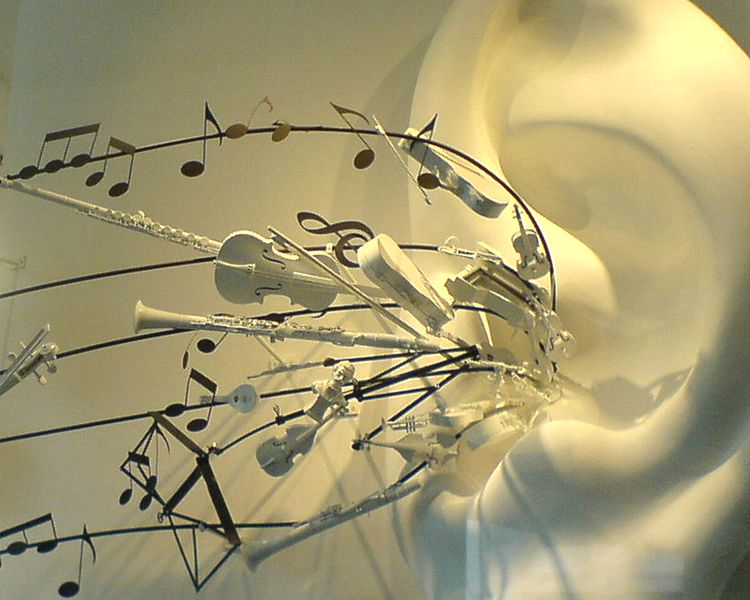
These days we’re spending a lot of time practicing “nose,” “eyes,” and “mouth” with our 19-month old granddaughter. It’s a fantastic thing, helping a child figure out what’s on her face, and watching her realize other people have these structures too.
The hardest thing, though, is “ears,” at least for our granddaughter. She can see her finger as she points to her eyes, nose, and mouth. They’re easy to find right there on her face. But ears are oddly tucked out of sight. Ears are also hard to find on other people (like me) who have them covered up with long hair or hats. More importantly, what do ears do anyway—at least from a toddler’s point of view?
We grownups ought to be asking the same question. We seem to have forgotten that we have ears on the sides of our heads. We don’t take very good care of them. We allow our noisy world to fill them not just with mechanical noises (which are a byproduct of modern life) but with rackety offensive sound piped in everywhere we go. So-called music and talk bellows from the speakers and screens in our restaurants and even at the gas pump. Our cars and phone beep incessantly. And many of today’s toys have built-in sound boxes that seem to delight our children, but, in fact, teach them that mindless sound must accompany every activity there is.
I tried to find a little dump truck for Patti to play with on a recent car trip: with wheels to spin and parts to manipulate. Everything I found came with a barrage of digital effects. Spin the tire and you got a pre-recorded “zoom-zoom.” Raise the truck bed and out came the grinding of a full-sized cement truck dumping its load.
Isn’t a child supposed to make those sounds himself? Where is the imagination? Will the next generations even need imagination? Or be able to conjure it up?
Is it because we don’t see our ears that we don’t care what we do to them? Do we forget what extraordinary receptacles of information they are? Or that they are one of our strongest tools for learning? Little toddler ears are learning an entire “foreign” language. They allow the child to identify relatives over the telephone by the timbre of their voices. One day they will help the child memorize pages of poetry, plus identify the sound of a cello or a bassoon. And if trained to do so, they will discern the stylistic distinctions between a symphony by Mozart versus one by Haydn.
Would we not all be better served if we treated ears like the high-quality sensors they are? Protected them from the mindless pollution of the modern soundscape? Used them carefully and thoughtfully?
Next time you blink your eyes, open your mouths for a tasty bite of sandwich, or take in a breath of fresh air, remember to find your ears too. And pause to express gratitude for the extraordinary value ears bring to life and learning.



